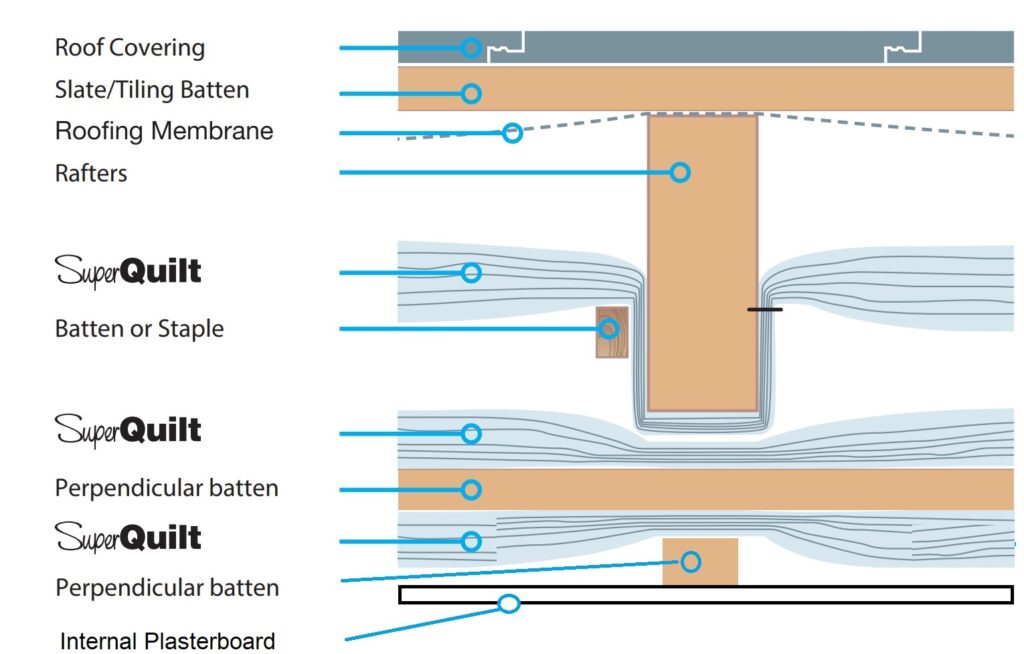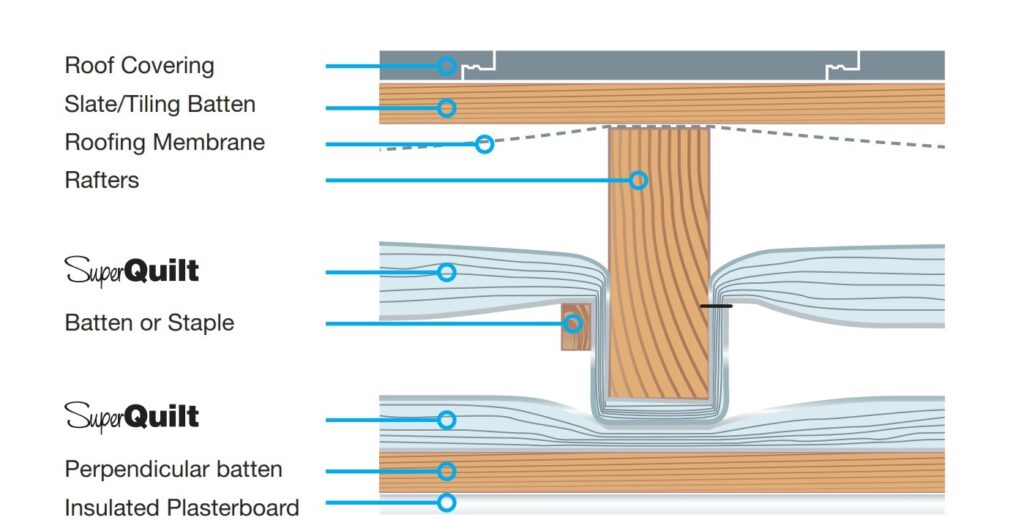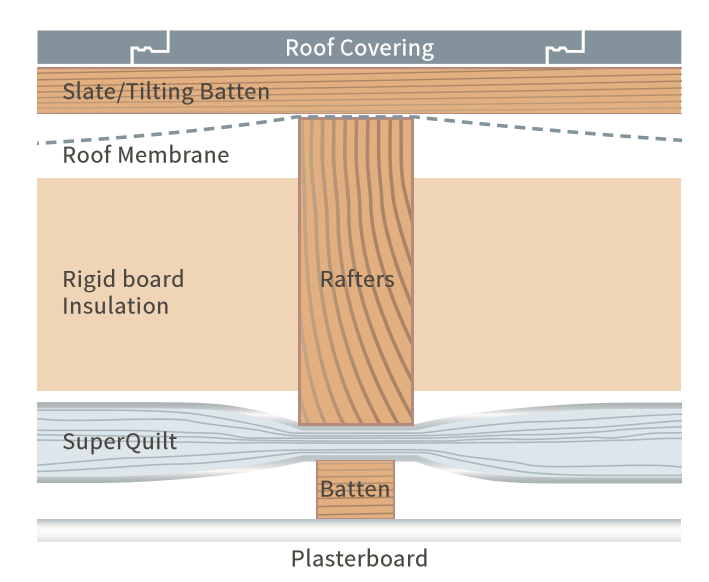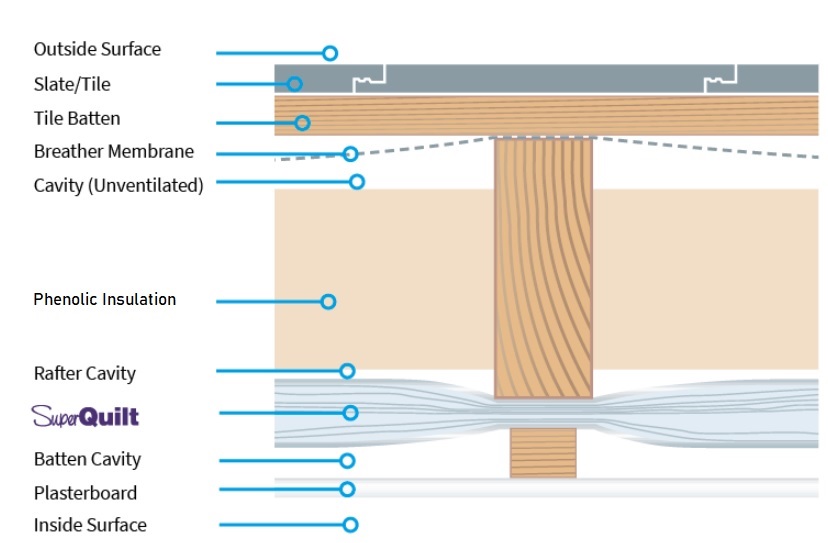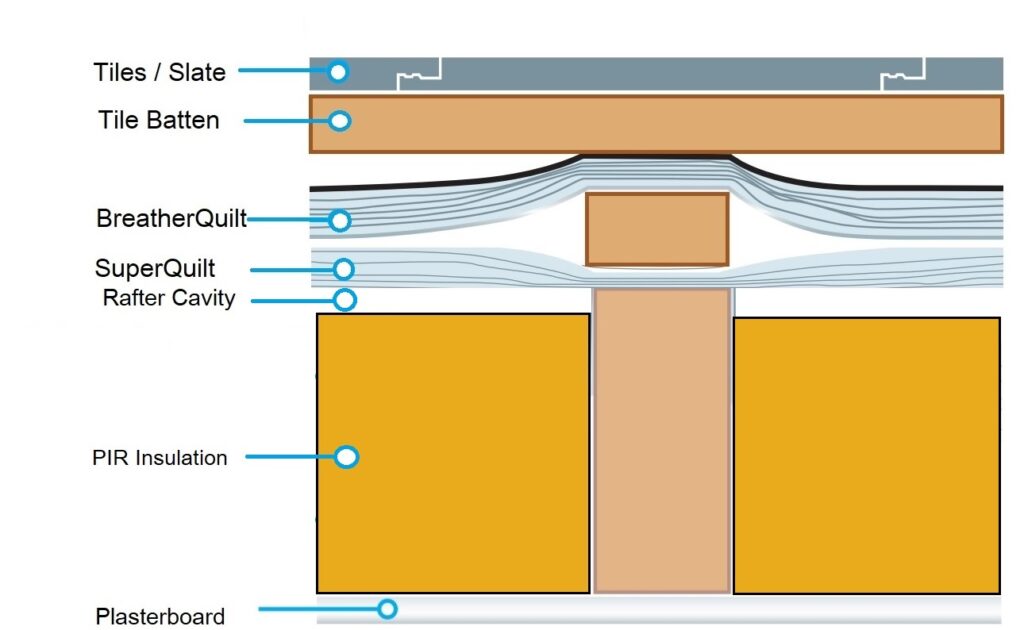Pitched Roofs – How to achieve 0.15 U-value
Pitched Roofs – How to achieve 0.15 U-value.
We understand that meeting a specific U-value for building control can be confusing. Especially when you have to take head-height restraints as well as the cost of material constantly rising into consideration.
So, what is a U-value?
Basically, a U-value is a measurement of heat loss and can explain the efficiency of an area for example Roofs, Walls, Floors, and Windows. The U-value is calculated by a sum of all the thermal-resistant layers that make up a structure. For example on a roof, you would usually find tiles, membranes, timber, and air gaps. All these factors impact the U-value in either a positive or negative way.
This means that the lower the U-value, the less heat will escape from that area. Whether you’re building a new property or renovating, it’s essential the building achieves the U-value specified. In addition, the lower the U-value the more you can save on your energy bills.
2023 U-Values for Building Regulation
In June 2022 new rules came into play for Approved Document Part L in relation to U-values, heat gain and heat loss. For more information on Part L you can check out the following link on the UK government website – See Data Source.
2023 – U-value requirements for existing dwellings |
|
| Application |
Current U-value |
|
Roof (Pitched & Flat Roof) |
0.15 |
|
Wall |
0.18 |
|
Floor |
0.18 |
Ultimately, the lower the U-value target, the more insulation is required for your project.
Pitched Roofs – Recommended Products
Multifoil-Insulation are the leading distributor of both SuperQuilt and BreatherQuilt. Both materials are multi-layered blankets consisting of aluminium foils, recycled wadding and PE foams. SuperQuilt and BreatherQuilt are proven to save space due to their impressive high R-value ratings. You will find the following recommended details including SuperQuilt and/or BreatherQuilt, and often alongside additional insulation products.
SuperQuilt For Pitched Roofs
- SuperQuilt – Product Link – Click Here!
- 40mm multifoil with 19 layers
- Compressed to just 7mm
- Fully accredited – BBA & BDA
- 2 in 1, insulating Vapour Control Layer
- UK Manufactured
- Made of 83% Recycled Materials
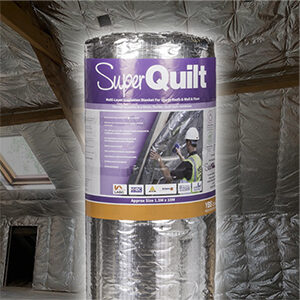
BreatherQuilt For Pitched Roofs
- BreatherQuilt – Product Link – Click Here!
- 11 Layer Multifoil
- 40mm thickness, 7mm compressed
- BDA Agremont Certified
- Fully breathable and waterproof
- UK Manufactured
- Made of 72% Recycled Materials
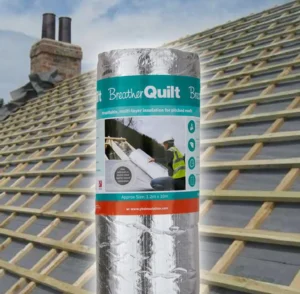
BreatherQuilt for Pitched Roofs
Pitched Roofs – How to achieve 0.15 U-value
Multifoil-Insulation have multiple systems to achieve current U-value regulations, for pitched roof projects. The details below vary, some will work out lower costs, whilst others will be space savers but more premium in costs. Each option will also display if you have to insulate under rafter or over rafter.
-
Option 1 – 3 Layers SuperQuilt, Standard Plasterboard – Insulating Under Rafter
-
Option 2 – 2 Layers SuperQuilt, 52.5mm Insulated Plasterboard – Insulating Under Rafter
-
Option 3 – 1 Layer SuperQuilt, 110mm PIR Insulation, Standard Plasterboard – Insulating Under Rafter
-
Option 4 – 1 Layer SuperQuilt, 100mm Phenolic Insulation, Standard Plasterboard – Insulating Under Rafter
-
Option 5 – 2 Layers SuperQuilt, 100mm Non Itch, Standard Plasterboard – Insulating Under Rafter
-
Option 6 – 2 Layers SuperQuilt, 50mm PIR Insulation, Standard Plasterboard – Insulating Under Rafter
-
Option 7 – 1 Layer SuperQuilt, 70mm PIR Insulation, 1 Layer BreatherQuilt, Standard Plasterboard – Insulating Over & Under Rafter
-
Option 8 – 1 Layer SuperQuilt, 140mm Rockwool, 1 Layer BreatherQuilt, Standard Plasterboard – Insulating Over & Under Rafter
-
Option 9 – 1 Layer SuperQuilt, 75mm PIR Insulation, 1 Layer BreatherQuilt, Standard Plasterboard – Insulating Over Rafter Only
Need authorisation from building control?
If your roof project is going through building control, it is likely documentation is required to prove the U-value has been achieved. These can be downloaded from our Online U-Value Calculator. Once the form is filled, our system will email the bespoke calculation in PDF form. This can be sent over, or printed off for your building control officer.
Struggling to find the correct calculation? If so, use our Request a U-value Tool! Mention the above option (e.g. Option 2, or Option 3) alongside the m² coverage, we will email a bespoke U-value Calculation and quote.
Require further assistance? – Please email sales@multifoil-insulation.com
Disclaimer
All build-ups and suggestions are provided in good faith. Our recommend details should be double checked with building control before committing to a purchase. The U-value table is a guide, and your desired target U-value is to be advised from your building inspector. Please check the calculations for correct air-gaps and battens, battens may be required to be installed perpendicular to how they are supplied in the image. 2D images are not to scale, and for illustrational purposes only. Multifoil Insulation cannot be held responsible for any losses financially or physically from advice provided on this webpage.


